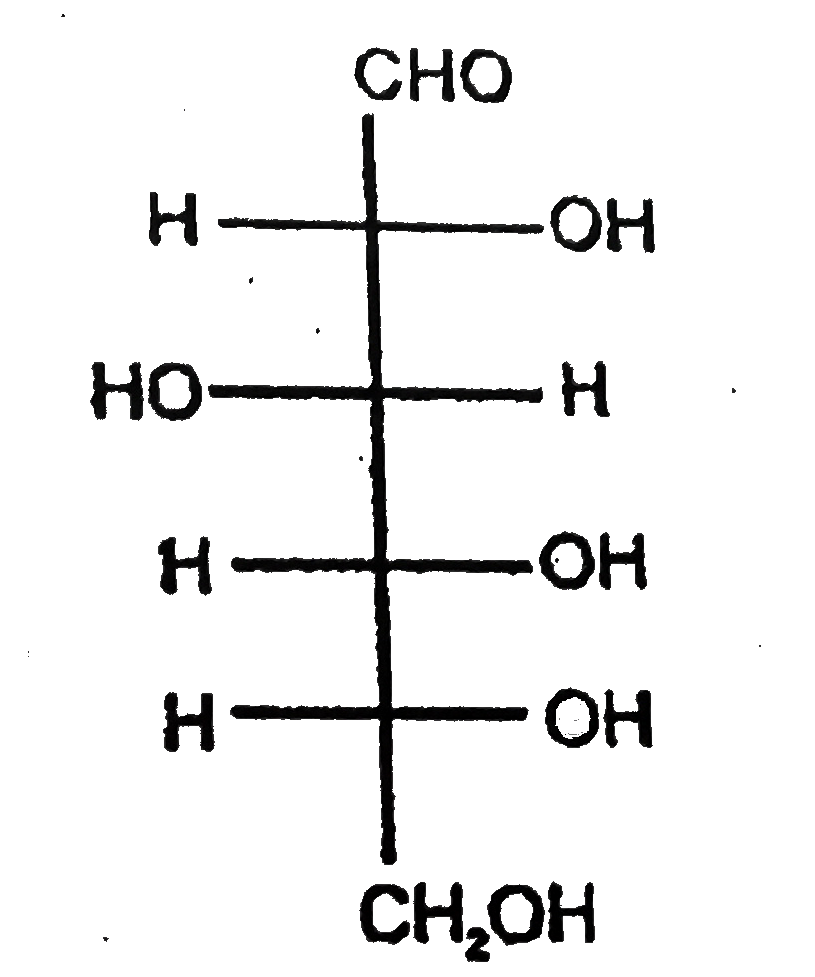2D,3L,4D,5D-6-Pentahhydroxyhexanal can give.
Tollen's Test
Lucas Test
2,4-DNP Test
FeCl2 Test
The correct Answer is:A,B
2D, 3L, 4D, 5D,6-Pentahydroxy hexanal = D-Glucose

Topper's Solved these Questions
Similar Questions
four fair dice D1,D2,D3andD4 each having six faces numbered 1,2,3,4,5 and 6 are rolled simultaneously. The probability that D4 shows a number appearing on one of D1,D2,D3 is
View Solutionfour fair dice D1,D2,D3andD4 each having six faces numbered 1,2,3,4,5 and 6 are rolled simultaneously. The probability that D4 shows a number appearing on one of D1,D2,D3 is
View Solution
Knowledge Check
- Question 1 - Select One
Four fair dice D1,D2,D2andD4 each having six faces numbered 1, 2, 3, 4, 5 and 6 are rolled simultaneously. The probability that shows a number appearing on one of D1,D2andD2 is:
A91216B108216C125216D127216 - Question 2 - Select One
Four fair dice D1,D2,D3D4 each having six faces numbered 1,2,3,4,5, and 6 are rolled simultaneously the probability that D4 shows a number appearing on one of D1,D2,D3 is
A91/216B108/216C125/216D127/216 - Question 3 - Select One
2c+3d=17
6c+5d=39
In the system of linear equations above. What is the value of 4c-4d?A-4B1C4D13
Number of five digit numbers of the form d1d2d3d4d5 where di'si=1,2,3,4,5 are digits and satisfying d1<d2≤d3<d4≤d5. is
View Solutionif 2a+3b+4c+5d2a−3b−4c−5d=2a−3b+4c−5d2a−3b−4c+5d, then show that a,3b,2c and 5d are in proportion.
View Solution(a) The charges each Q are placed at x−d,2d,4d,…∞. Find electric potential at origin O.
(b) A charge +Q is placed at each of the points x=d,x=3d,x=5d,…..,∞ on the x-axis , and a charge −Q is placed at each of the points x=2d,x=4d,x=6d,...,∞.Find the electric potential at the origin O.View Solution(a) The charges each Q are placed at x−d,2d,4d,…∞. Find electric potential at origin O.
(b) A charge +Q is placed at each of the points x=d,x=3d,x=5d,…..,∞ on the x-axis , and a charge −Q is placed at each of the points x=2d,x=4d,x=6d,...,∞.Find the electric potential at the origin O.View SolutionA symmetric double convex lens is cut in two equal parts by a plane perpendiculr to the pricipal axis. If the power of the original lens was 4D, the power of a cut lens will be
a.2D b.3D c.4D d.5DView Solution

